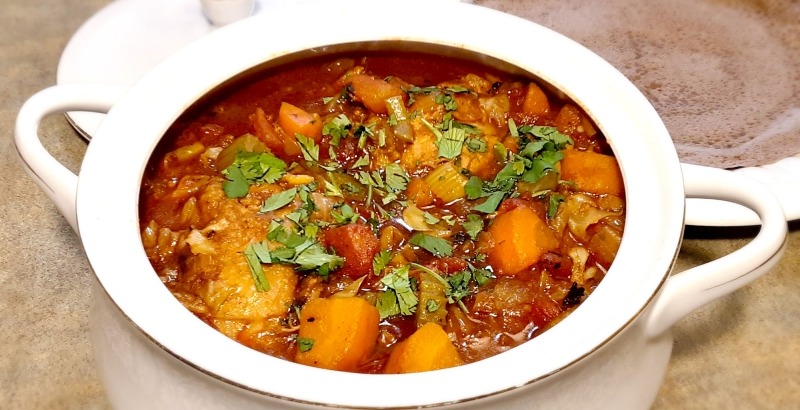An Ethiopian movie deserves to be paired with an Ethiopian meal. So what if Champaign-Urbana doesn’t have an Ethiopian restaurant? I chose to make my own instead with ingredient from local grocery Best of Africa.
Lamb (2015) opens in the Ethiopian countryside, inside a small hut with a father and son sharing a piece of Ethiopian flatbread called injera. The conversation revolves around food — or the lack of. Ethiopia is apparently experiencing another drought, and that’s why there was nothing on top of the injera; father and son were eating just plain bread that evening.
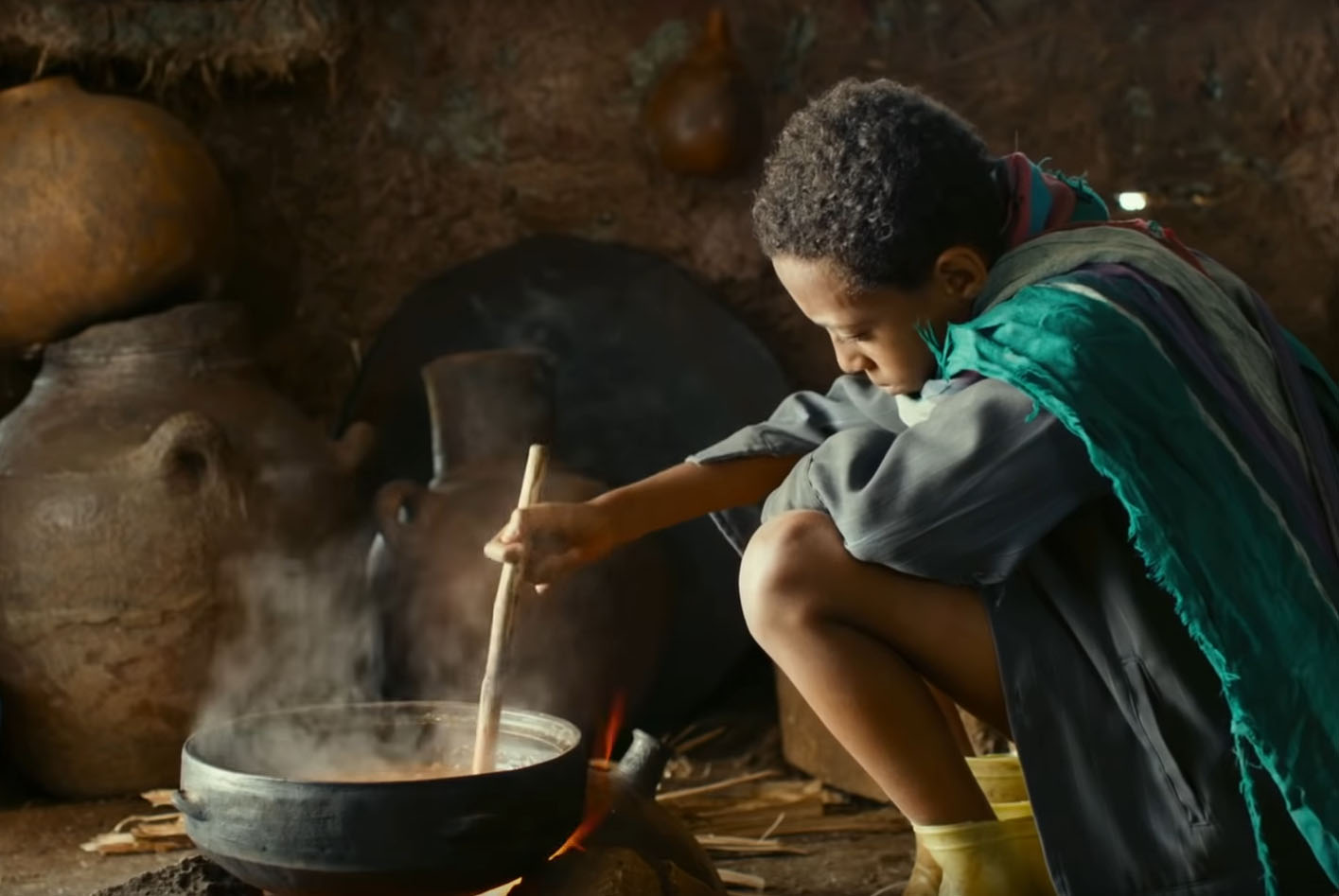
Photo by Kimstim Films.
For a country with a unique food tradition and a beloved world-class cuisine that can be enjoyed at authentic Ethiopian restaurants everywhere, this is a sad scene indeed. Later in the movie, we do see a celebration feast where a proper Ethiopian meal is served, and this time, the injera is topped with lots of tasty looking meat and veggies. There is dancing and music, people are happy, but lamb was not served that night.
Yared Zeleke’s Lamb (not to be confused with the 2021 Icelandic film with the same title) is a movie about the preciousness of food. A baby is sick because there is a lack of food. A chicken is sold in order to buy lentils which will feed more people for longer. The family garden is being watered with urine because water is so scarce. A boy’s pet lamb is about to be slaughtered for the upcoming holiday celebration, and he has to figure out how to save her. Thereby the title Lamb, one single word which also perfectly encapsulates the style of this film: a simple and straightforward story told visually without any exposition. Natural lighting is used throughout the movie, and the camera is always hand-held. The authentic natural performances from the seemingly non-professional cast fits perfectly with this style. In fact, this film feels like a cross between an ethnographic documentary and neo-realist coming-of-age films like Satyajit Ray’s The Apu Trilogy.

Photo by Kimstim Films.
Set against the gorgeous rural landscape of the Ethiopian mountainside, this debut feature from Yared Zeleke is a 2015 French-Ethiopian co-production that premiered in the Cannes Film Festival’s Un Certain Regard section which features films “with unusual styles and non-traditional stories seeking international recognition.” It was the first time an Ethiopian film has ever been officially selected to be screened at Cannes. Despite the elegant simplicity in its storytelling, the film also manages to intelligently engage in universal life lessons and themes like innocence vs. responsibility, individuality vs. community, toxic masculinity, and the art of letting go.
After the movie, I wanted to drive to Chicago to have dinner at Nebeb, our current favorite Ethiopian restaurant, but instead we settled on making our own Ethiopian dinner at home. Our favorite Ethiopian dishes are Doro Wat (Berbere chicken stew), gomen (collard greens), and timatim (tomato and cucumber salad), and for dinner following Lamb, we made Doro Wat for dinner.
The most challenging part of cooking an Ethiopian meal at home is making the flatbread called injera. Injera is both the bread and the platter Ethiopian meals are served on. In Ethiopian restaurants, the whole table shares one platter, and everyone gets to try some of everything. Diners don’t use spoons or forks; instead one tears off a little injera with the right hand (even if you’re left-handed, there’s a reason for that), then use the bread to scoop up the food and carry it to your mouth. The best part of the meal is the end when everyone gets to eat the platter which has soaked in all the juicy goodness of all the dishes.
I decided to make injera from scratch which takes a little planning because the batter has to be fermented, and the process takes at least three days.
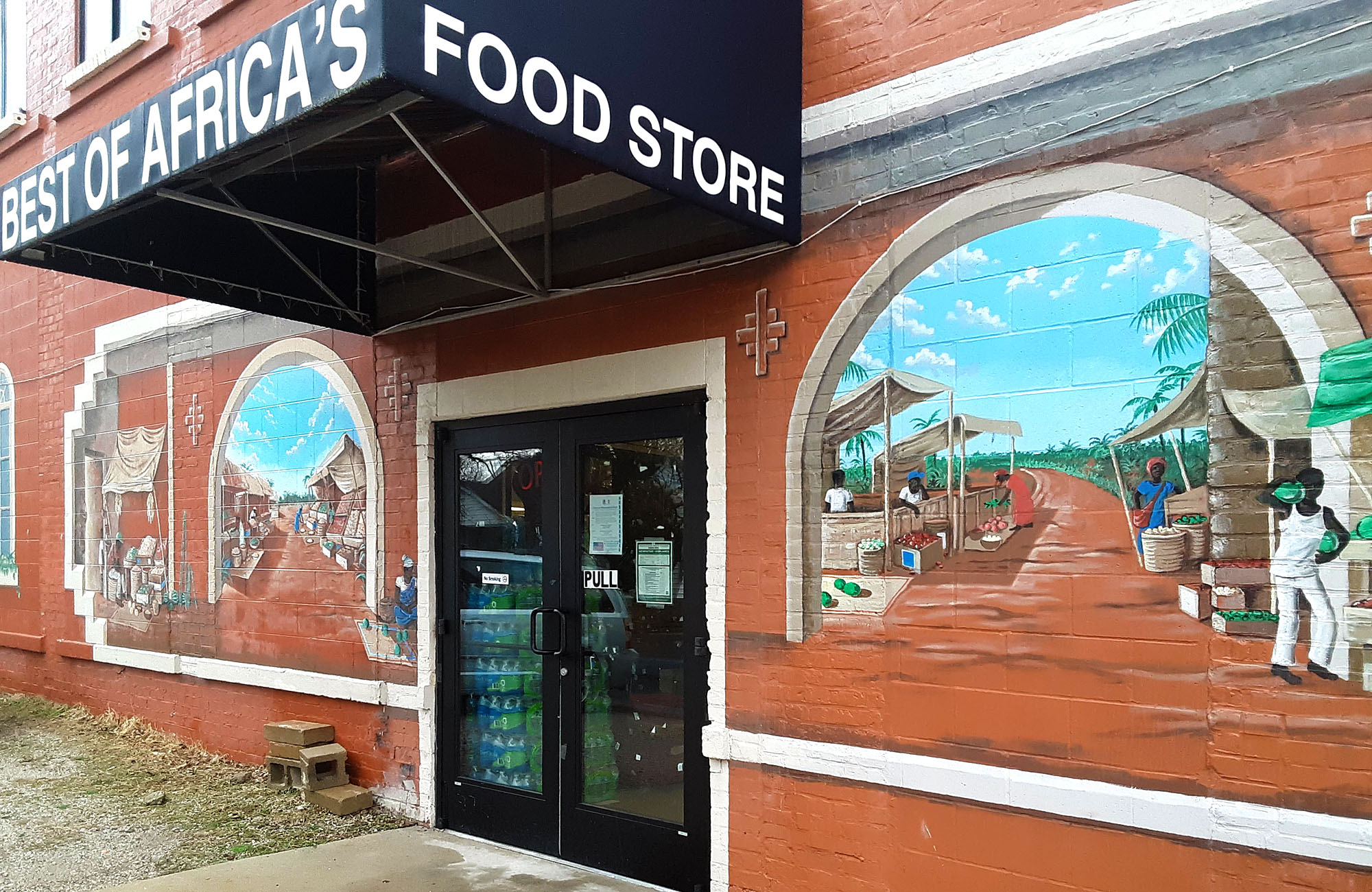
Photo by Alyssa Buckley.
Fortunately, Best of Africa’s Food Store, our local specialty grocer in Urbana, stocks teff flour (2 pounds for $6.75).
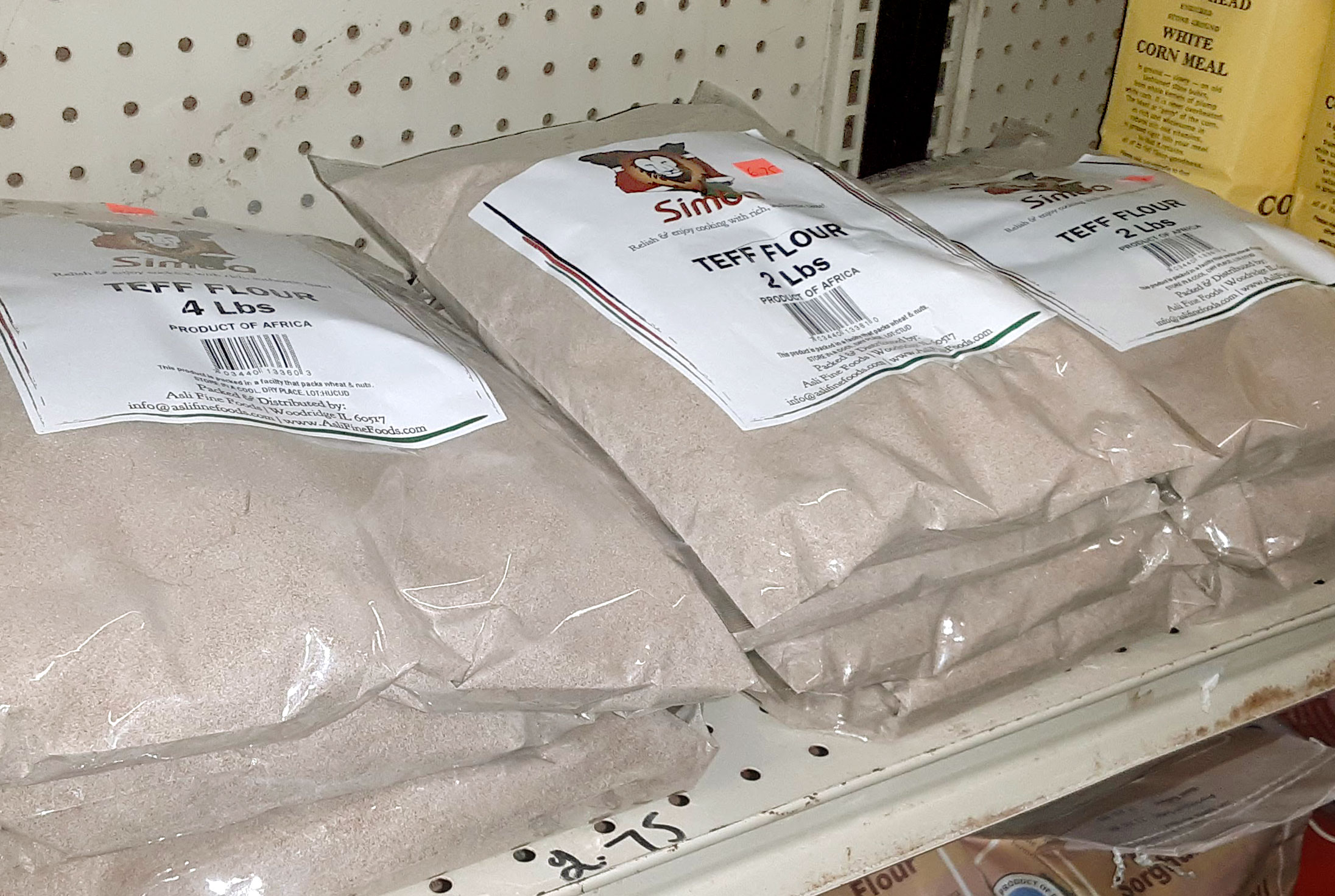
Photo by Paul Young.
Teff flour, the main ingredient in injera, is a naturally gluten-free ancient grain and also known as the smallest grain in the world. Because of its size, it is difficult to remove the bran and germ during milling which means that the teff flour in the store is always whole grain. Making teff is like making pancakes or crepes. I started by making a batter with a mix of teff flour and wheat flour (2:1 ratio). Add some water and a little salt, then let it ferment at room temperature. You do have to stir it once a day, and in three days or so you’ll have a slightly sour bubbly batter that looks like this.
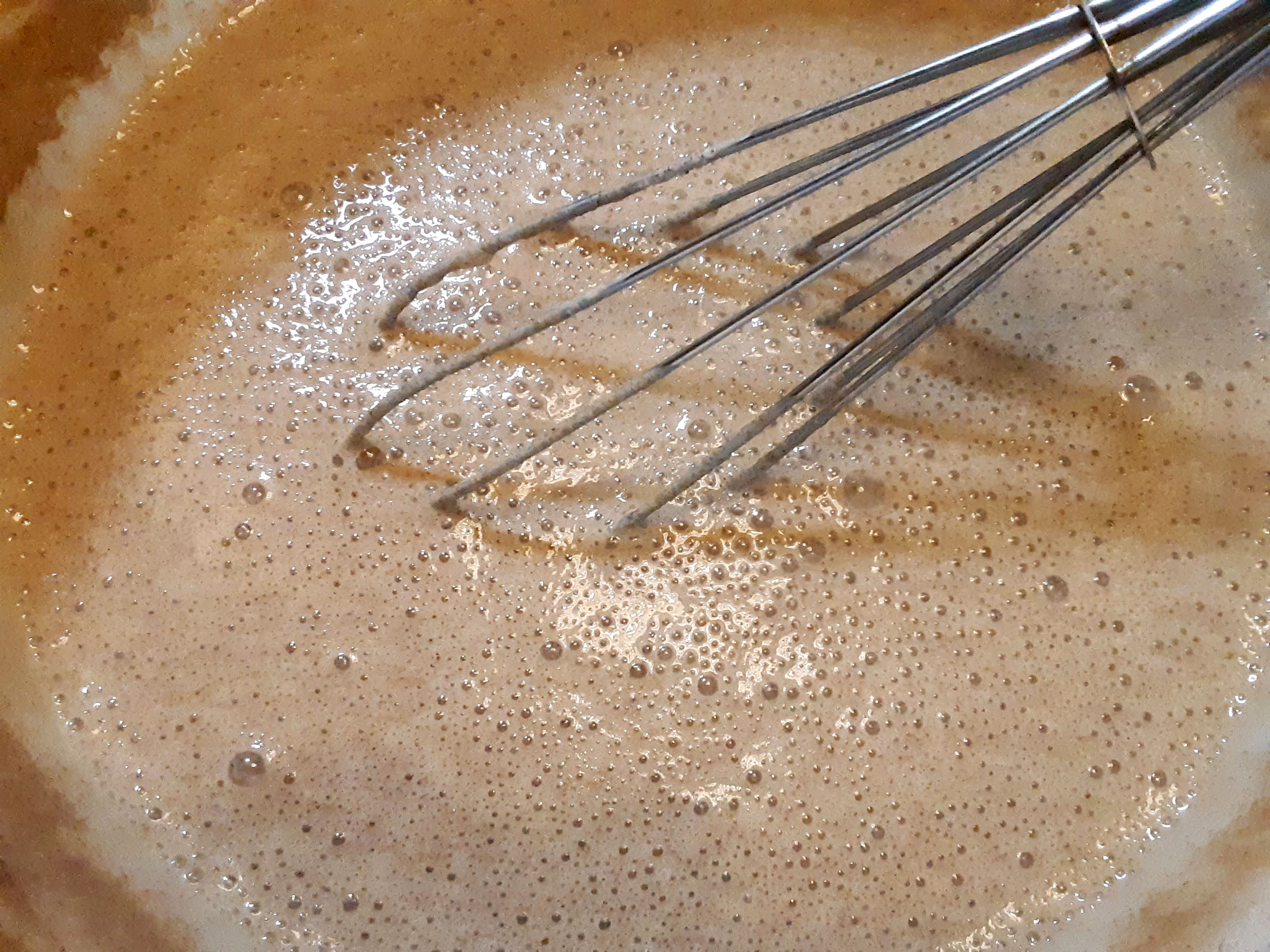
Photo by Paul Young.
I used my cast-iron skillet to make the “pancake” because it is the largest flat heating surface I had.
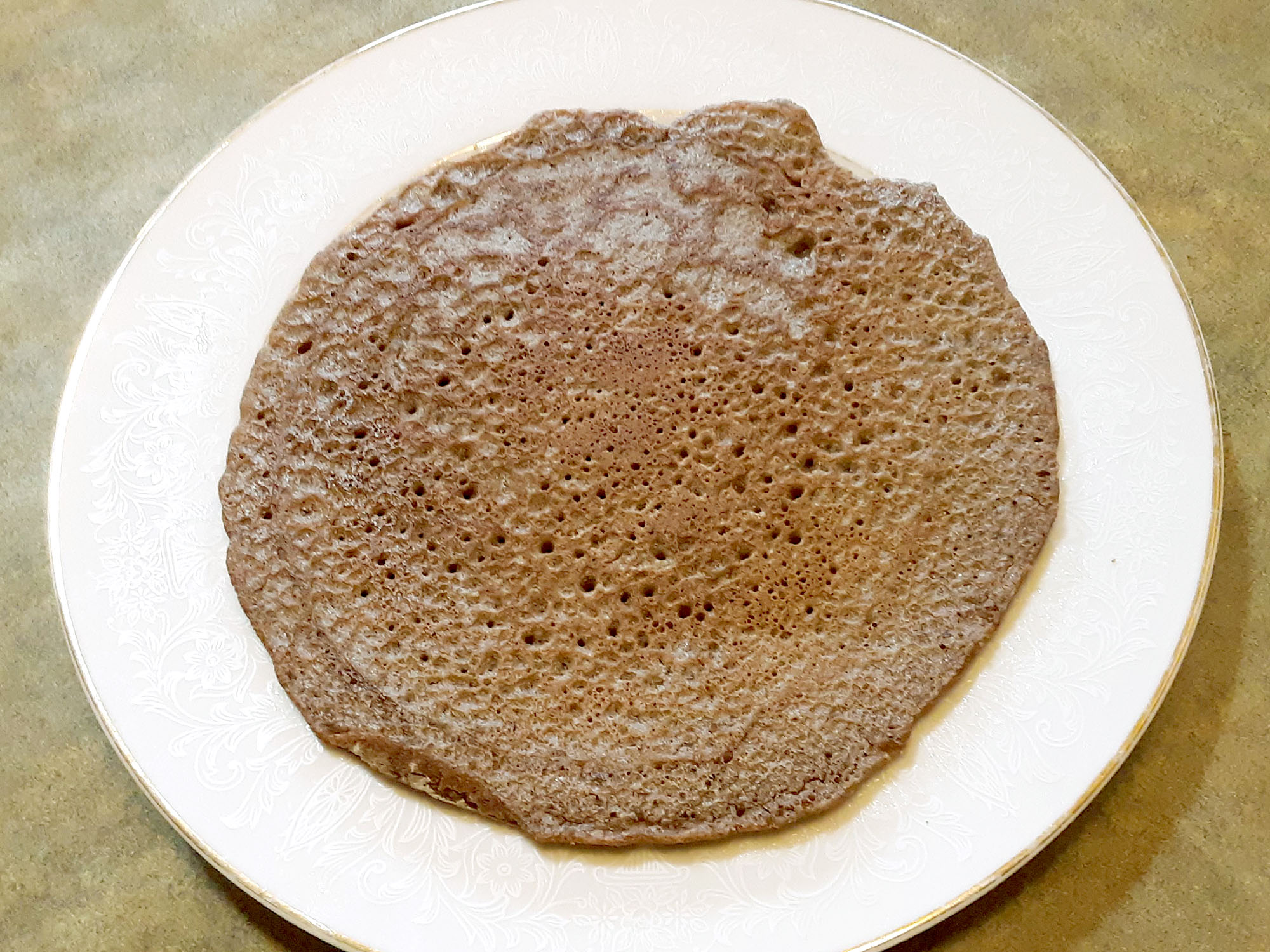
Photo by Paul Young.
Since Berbere chicken stew was for dinner that night, I decided to try a packaged Berbere spice mix ($5.75 for 7oz).
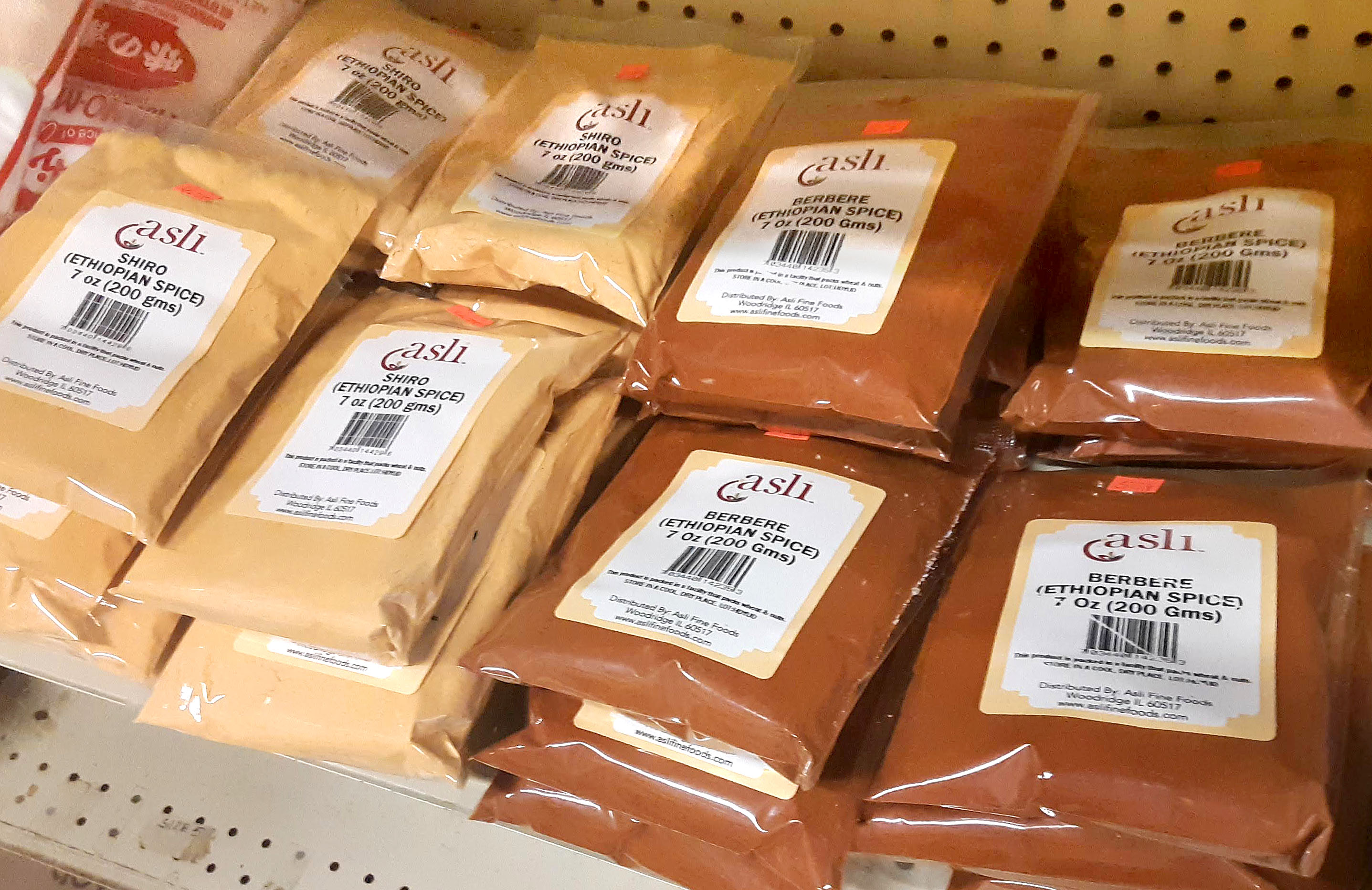
Photo by Paul Young.
Since the Asli brand spice mix did not have an ingredient list, I decided to do a test with a small batch of the stew. Luckily I did as it turned out that their ratio of cheyenne pepper to the rest of the spices was overwhelming. I could not get enough punch in my stew without also making it overwhelmingly spicy hot, so I reverted back to my homemade version.
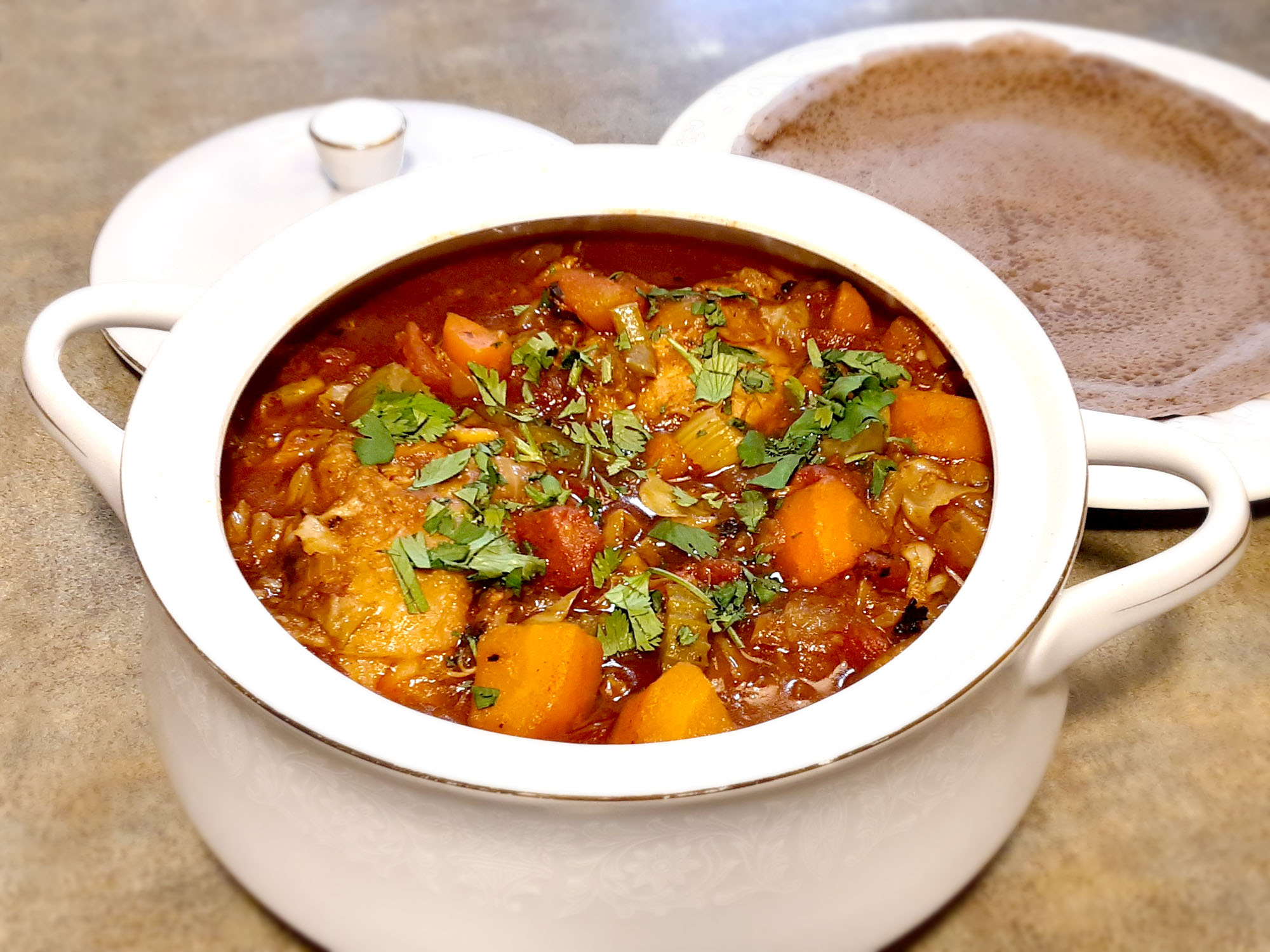
Photo by Paul Young.
Right next to the Berbere spice mix was an Ethiopian Shiro spice mix ($4.75 for 7 oz). Shiro Wat is kind of like an Ethiopian hummus. I’d never made this vegetarian dish before, so I had to search the Internet for clues. As it turned out, the Asli brand Shiro spice mix was mostly chickpea flour with a little Berbere spice mixed in, so all I had to do was saute some onions and garlic in ghee, stir in a can of petite diced tomatoes, and then add the spice mix.

Photo by Paul Young.
It was just like making hummus from a packaged mix, but the Ethiopian version is so much more flavorful.
While I was shopping at Best of Africa’s Food Store, I also decided to pick up a few hard-to-find items for future meals.

Photo by Paul Young.
In their vast freezer section, I spotted some goat meat so I stocked up for my next Jamaican curry goat stew ($26 for a 2-pound package). How often do you see beef tongue? So I grabbed one for my next lengua taco feast ($5.99 per pound).
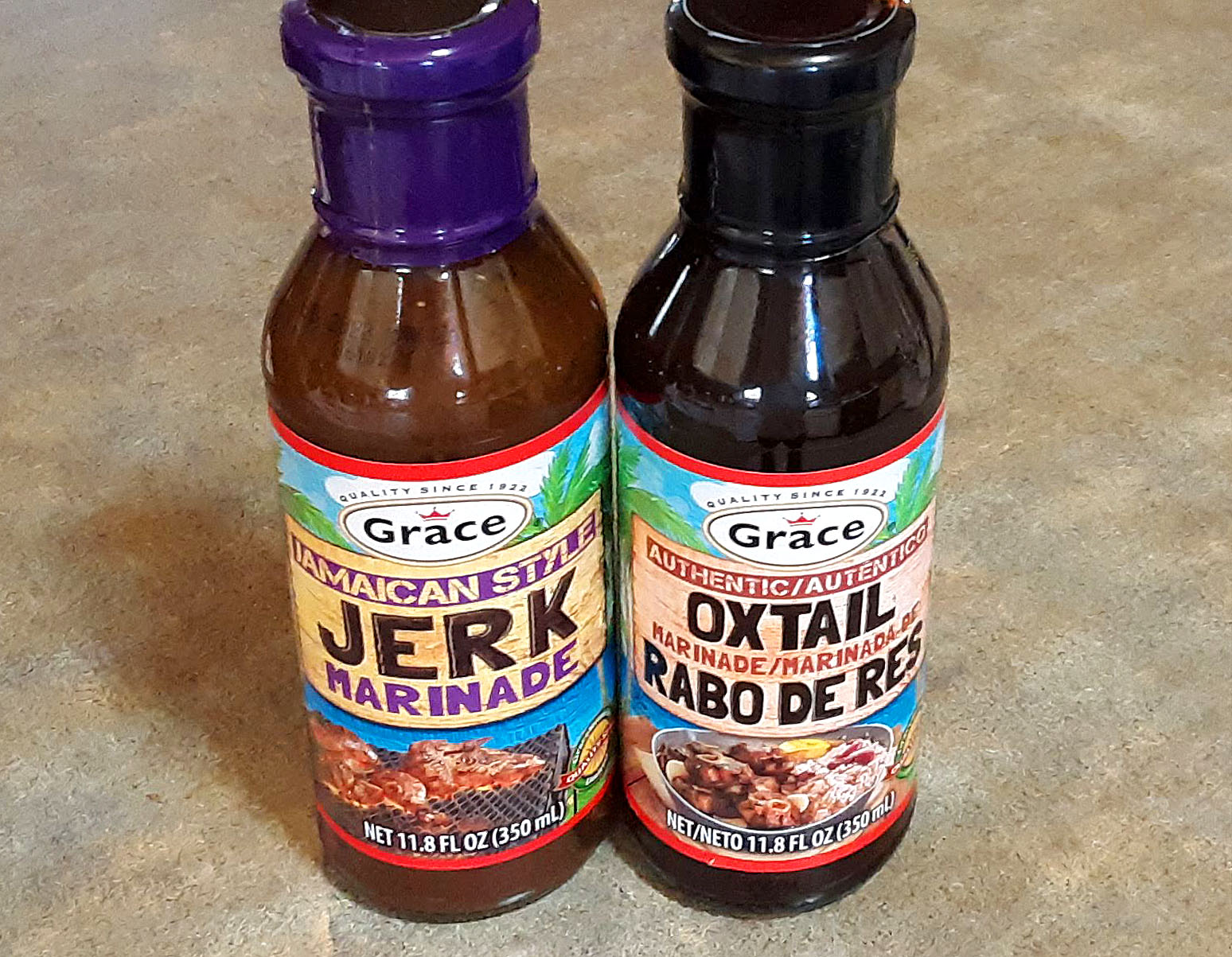
Photo by Paul Young.
Then I spotted a new brand of marinade I haven’t tried before, so I picked up a couple bottles to test out for my next oxtail stew and jerk chicken cookout ($9 per bottle).
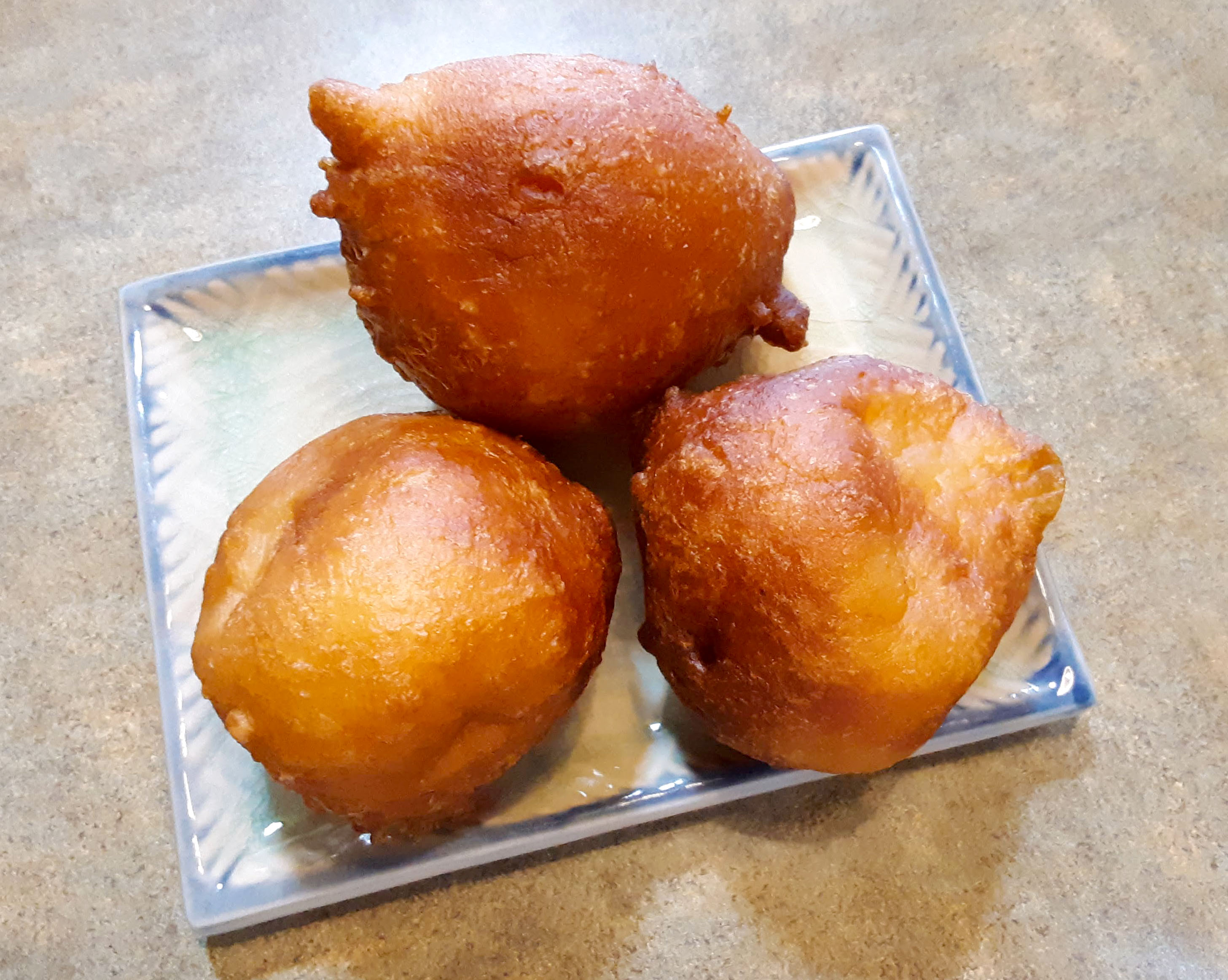
Photo by Paul Young.
They always have to place some sweets next to the cash register, don’t they? This was a Jamaican style donut called puff puff (three for $1). Damn right, I’ll take some home for breakfast tomorrow. It went great with coffee, just like American donuts. They were less sweet and denser, yet still fluffy soft on the inside.
Now that was a fun shopping trip!
Best of Africa’s Food Store
208 W Griggs St
Urbana
M-Sa 8:30 a.m. to 8 p.m.
Su noon to 6 p.m.
Lamb is currently streaming on Kanopy, the free streaming platform for interesting non-mainstream fare. If you have a library card in Champaign or Urbana, your taxes have already paid for your free subscription.
Paul Young is a townie who likes to travel the world seeking good things to eat. So far, he has eaten his way through 22 countries, and he loves to share his culinary discoveries with cooking classes where he will make these same dishes.








